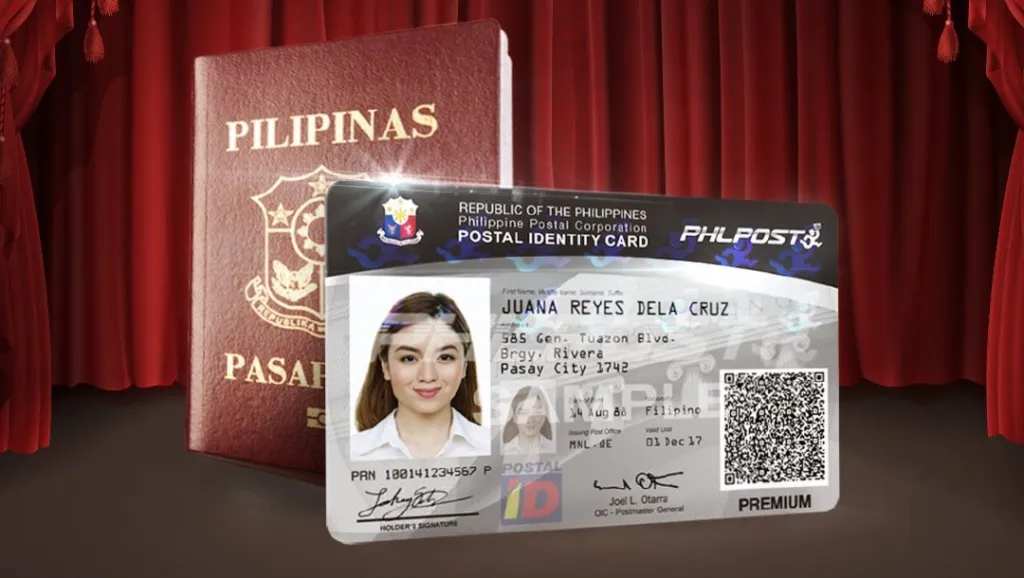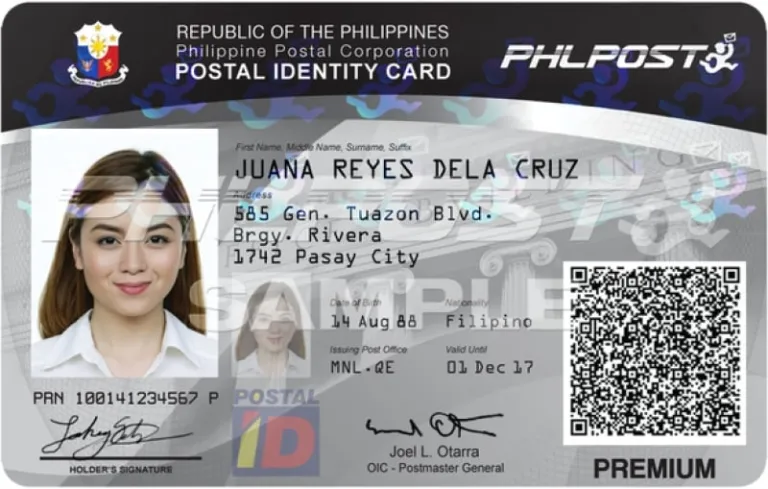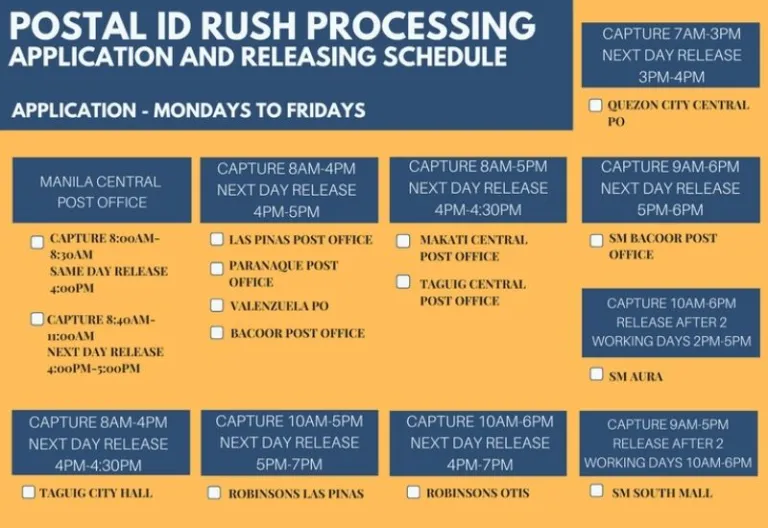The only plastic we need for travel.
Philippine Postal ID: Why You Should Get One & How to Apply

In 2019, the Department of Foreign Affairs (DFA) began accepting the Philippine Postal ID as a valid form of identification for passport applications. The Postal ID, a government-issued ID, offers a convenient option for many who may have difficulty securing other primary IDs. This has made the process of applying for a Philippine passport more accessible.
Also read: 8 Things You Should NEVER Do to Your Philippine Passport
Why you should get a Philippine postal ID card
After graduating from college, I realised just how important it is to have one or two valid government IDs — and just how much of a challenge it can be to get even one. (Most applications require you to already have at least one valid government ID!) Examples of these include a Philippine passport, driver’s license, UMID, voter’s license, PRC ID, SSS ID, or GSIS ID.
Even if you already have your passport, having another government-issued ID will definitely still come in handy — especially if it’s your one and only valid ID, and you often find yourself bringing it around just in case.
Easy requirements, hassle-free application
Why the Philippine postal ID, you might wonder? Well, we all know how much trouble it can take to apply for a valid government ID in the Philippines. Some have a lot of requirements (including those that can be challenging to acquire), and even entail visits to offices that aren’t accessible to everyone. Most government ID applications are also infamous for requiring long periods of waiting — both during the application process itself, and for the IDs to be released.
So, this is where the Philippine postal ID comes in. It’s known to be one of the easiest and fastest government IDs you can acquire in the country. It comes with a simple set of requirements, and — get this — doesn’t require you to already have a valid government ID. (Though of course, you can present yours if you already have one.) There are over 200 capture stations all over the nation, too!
New and improved Philippine postal ID features
 Image credit: Philippine Postal ID Official Website
Image credit: Philippine Postal ID Official Website
If you applied for a basic Philippine postal ID when it was first launched in 2016, then you might be a little discouraged. I myself applied for one, and was disappointed to find that it wasn’t readily accepted or recognised at several establishments.
But fret not — the Philippine postal ID is new and improved, recognised both locally and internationally. For Filipinos, it can be used as your primary form of identification and is valid for three years.
Its special security features include a ghost image of the applicant, a hologram of a running mailman (which can only be viewed at certain angles), and a special ink that can only be seen when illuminated with UV light. It also comes with a QR code, which can be used to verify the identity of the ID holder using a downloadable smartphone app. To add to all of this, cardholders get to enjoy perks and privileges, too!
How to apply for a Philippine postal ID
With no age, employment, or skill requirements, the Philippine postal ID is designed for every Filipino!
Qualifications
All Filipinos living in the Philippines are qualified to apply for a Philippine postal ID. Filipinos living abroad also may apply, as long as they are in the Philippines during the time of application. In addition, foreign residents living in the country for at least six months are qualified to apply as well.
Requirements for Filipinos

Two copies of your duly accomplished Philippine Postal ID application form, which you can find at any postal office, or download here
Original and photocopy of your proof of identity — any one of the following:
Birth certificate issued by NSO or Local Civil Registry
GSIS or SSS UMID card
Valid driver’s license
Valid passport
Note: Married female applicants must bring their marriage certificates to validate change of name from birth document.
Or, any two of the following valid IDs and documents (one of which must bear the applicant’s photo and signature):
BIR ID
Baptismal Certificate
Certificate of Birth
College or Post-Graduate Transcript of Records
Confirmation Certificate
Elementary or High School Form 137
Marriage Certificate
Alumni ID
Basic Postal ID
College, School or University ID
Company ID
Integrated Bar of the Philippines (IBP) ID
NBI Clearance
OWWA ID
Pag-Ibig ID
PhilHealth ID
PRC ID
Paper-based Postal ID
Police Clearance
Seaman’s Book
Senior Citizen ID
Tax Identification Number Card
Voter’s ID
Original and photocopy of your proof of address — any one of the following:
Barangay Certificate of Residency issued within three months prior to PID application
Certified True Copy of Lease
Bank Statement
Certified True Copy of Titles issued by the Land Registration Authority (LRA)
Credit Card Statement
School Billing Statement
Certified True Copy of Real Estate Tax Receipt
Utility Bill (cable, electric, internet, landline, telephone, water)
Application fee of ₱504, inclusive of 12% VAT and delivery fee
Application process

Step 1. Fill out the application form and submit it along with all requirements at any post office.
Step 2. After your documents are screened, proceed to the nearest ID capture station for photo-taking and fingerprinting. To prevent identity theft, applicants will go through a uniqueness check via the automated fingerprint identification system (AFIS).
You can check out the list of designated post offices and selected malls here.
Step 3. Wait for your postal ID will be delivered to your doorstep via a PHLPost mail carrier!
Depending on your location, processing time is as follows:
Metro Manila residents — approximately 10 to 15 working days from application
Residents of other major cities and municipalities — approximately 20 working days from application
Residents of island provinces and remote barangays — approximately 30 working days from application
Rush processing
Rush processing is also available at selected post offices. This will cost you ₱650, inclusive of 12% VAT and delivery fee. See the schedule below:
In case of any changes, you may refer to the Philippine Postal ID’s official Facebook page.
Process for renewal or replacement
Already have a basic postal ID? To get your hands on the new and improved Philippine postal ID, visit your nearest post office with your card and two copies of the application form.
In case of loss or theft, bring two copies of your duly accomplished application and a notarised affidavit of loss.li
So, that’s all there is to it! With such simple requirements and hassle-free processing, the Philippine postal ID is an easy go-to for Pinoys. Not only will it come in handy for passport applications — it can also be your primary form of identification for domestic trips, and more!
Featured image credit: Philippine Postal ID | Official Website
Published at
About Author
Gabriella Salud
Subscribe our Newsletter
Get our weekly tips and travel news!
Recommended Articles
14 Best Credit Cards for Travel in the Philippines 2019 Visa-Free Destinations for Philippine Passport Holders Where will your passport bring you next?
Our 3-Day Tokyo Trip: Guide, Itinerary & Tips for Filipinos If you only have 3 days to explore Tokyo, here’s a guide for you!
32nd Travel Tour Expo 2025: Unlock Massive Discounts on Flights & Hotels Unlock Exclusive Travel Deals!
Inspiring at 70: How Lola Letecia Proved Age Is No Barrier To Hiking Mt. Apo Who says adventure has an age limit?
Latest Articles
6 Filipino Foods to Eat During New Year's Eve for Better Luck and Wealth in 2026 Lucky Filipino foods you need for a prosperous Year of the Fire Horse!
FREE NYE 2026 Countdown & Firework Shows in the Philippines Don't waste ₱17k on hotel tickets! Catch SB19, Bamboo, and Ely Buendia for FREE.
New US Biometric Rule Filipino Travellers Must Know Mandatory border photo checks
Free MRT 3 Rides on Rizal Day 2025 Four hours of free rides
SM North-Trinoma Walkway Soon to Be Built, Says DOTr Safer walks ahead!


